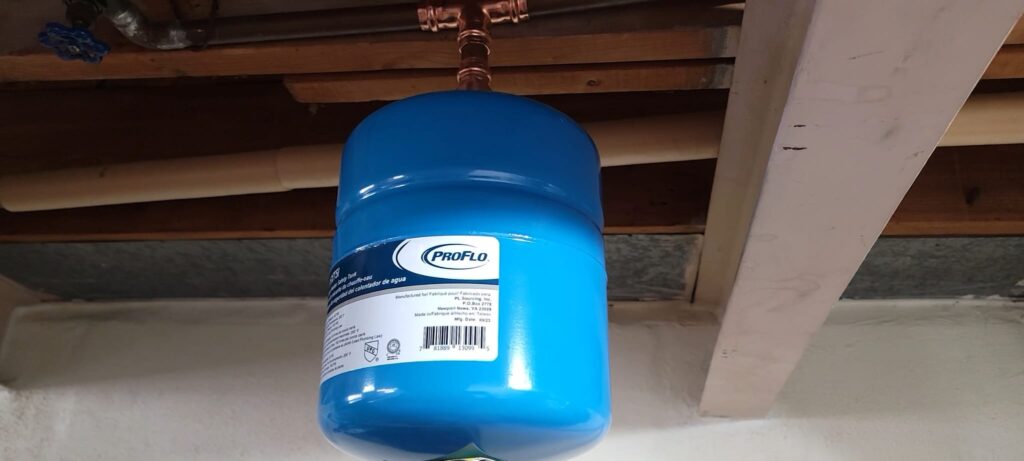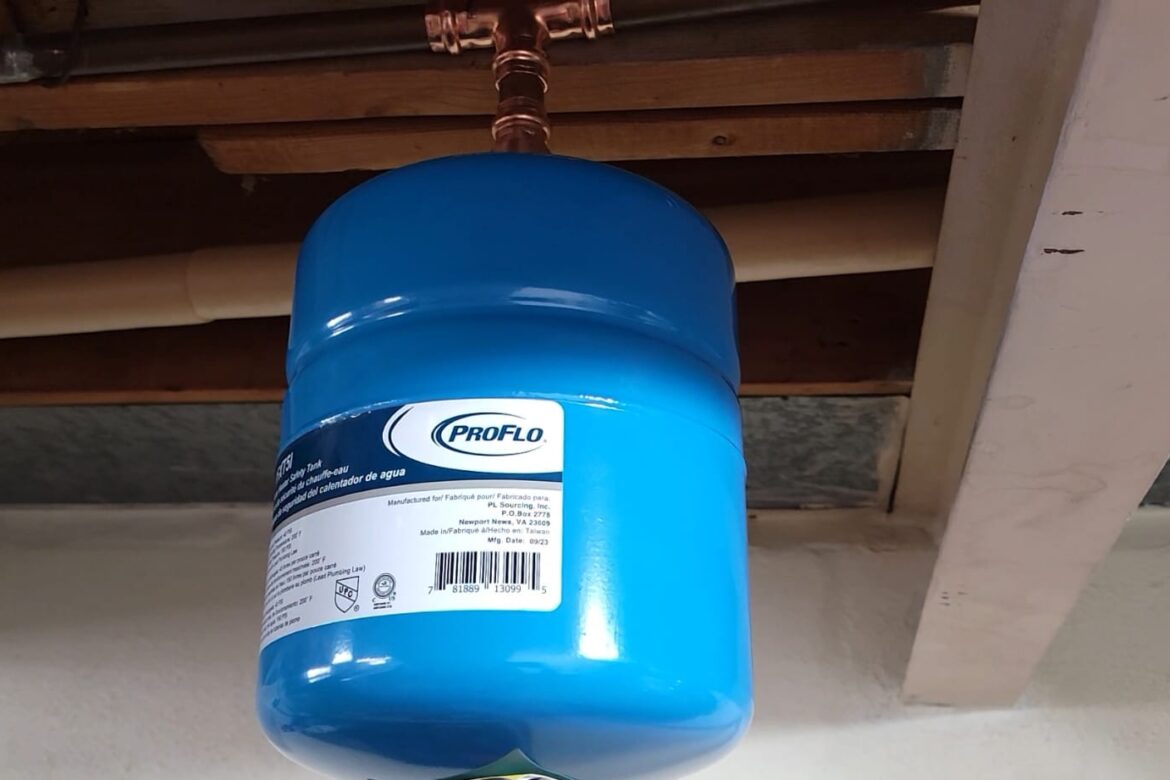The expansion tank is a crucial component in maintaining both the safety and efficiency of a water heating system. Despite its relatively diminutive size, this device plays an indispensable role in safeguarding the plumbing infrastructure from pressure build-up that results from thermal expansion. This document aims to elucidate the significance of the expansion tank in a comprehensive manner.
- Understanding Thermal Expansion
As water is subjected to heating, it undergoes thermal expansion, which is a physical process wherein its volume increases as temperature rises. This phenomenon can lead to a significant increase in pressure within a closed-loop plumbing system.
In many traditional water heating systems, the process of heating water not only raises its temperature but also causes an increase in its volume.
In cases where there are no adequate outlets for this additional volume, the internal pressure of the pipes can escalate to alarming levels.
This unwanted pressure can cause detrimental effects such as damaging the water heater, compromising plumbing fixtures, or even resulting in catastrophic failures like burst pipes.
When an expansion tank is not incorporated into the system, the plumbing infrastructure must endure this pressure surge, which can culminate in substantial repair costs, extensive water damage, and potentially dangerous situations. The introduction of an expansion tank allows for a designated area for managing thermal expansion in a secure and effective manner.
- Mechanism of the Expansion Tank
An expansion tank, typically resembling a small, pre-charged cylinder, is strategically installed in proximity to the water heater. This tank is fitted with an air bladder or diaphragm that effectively separates the air chamber from the water chamber.
When water in the heater is heated and begins to expand, the resulting excess pressure is redirected into the expansion tank. As the air bladder compresses, it provides a designated space for the expanding water, alleviating the pressure in the main plumbing lines.
Upon cooling, when the water contracts, the expansion tank ensures that any excess water pressure is returned to the plumbing system, thus maintaining equilibrium. This function is vital as it prevents sudden and detrimental pressure spikes, which may otherwise compromise the integrity and longevity of not only the pipes but also various appliances, including the water heater itself.

- The Necessity of an Expansion Tank
- Protection of the Water Heater: The absence of an expansion tank exposes the water heater to excessive pressure caused by thermal expansion, which can lead to significant damage. This damage can take the form of leaks, corrosion, or even premature failure of the unit. By incorporating an expansion tank, homeowners can enhance the safety profile of their heating unit, thereby extending its operational lifespan.
- Mitigation of Pipe Damage: Elevated water pressure within the plumbing can result in structural failures such as pipe bursts or leaks. Over time, these failures can lead to extensive water damage and costly restoration expenses. An expansion tank significantly reduces the risk of over-pressurization, thus lowering the likelihood of pipe damage and the associated economic burden.
- Enhancement of System Efficiency: The ability of an expansion tank to regulate pressure and minimize fluctuations plays a critical role in maintaining consistent operation of the water heater and the overall plumbing system. This stability not only leads to improved performance but also translates into enhanced energy efficiency, resulting in lower utility bills for homeowners.
- Assurance of Safety: Fluctuations in pressure, especially in closed systems, can lead to hazardous scenarios, including potential ruptures. The expansion tank acts as a critical safety apparatus, allowing the overall system to effectively manage pressure variations and providing a safeguard against potentially dangerous circumstances.
4. Circumstances Necessitating an Expansion Tank
While not all water heaters necessitate the installation of an expansion tank, several specific scenarios warrant its inclusion:
- Closed-loop Systems: In residential settings characterized by closed-loop plumbing systems—where water supply is controlled via a pressure-reducing valve—installation of an expansion tank becomes essential to ensure system integrity and safety.
- New Water Heaters: Although contemporary water heaters are engineered to withstand high-pressure environments, the additional safety provided by an expansion tank is advantageous and highly recommended for optimal operation.
- Hot Water Recirculation Systems: Homes with hot water recirculation systems, which function to provide instant hot water, experience complex flow dynamics that can lead to significant pressure fluctuations. An expansion tank can effectively manage these variations, thereby preserving system integrity.
5. Indicators Necessitating Maintenance or Replacement of an Expansion Tank
Expansion tanks are designed to require minimal maintenance; however, periodic inspections may be necessary to ensure their proper function. Certain signs may indicate that the expansion tank is not performing optimally:
- Leaking: The appearance of leaks in or around the expansion tank is a clear indicator that the tank may require replacement. Leaks typically arise when the internal bladder sustains damage or undergoes wear and tear.
- Increased Water Pressure: If residents observe unusually high water pressure within their home, even with a functioning pressure-regulating valve, it may signify that the expansion tank is failing to absorb pressure effectively.
- Unusual Noises: Any abnormal sounds, such as banging or vibrating, emanating from pipes or the water heater may suggest fluctuations in water pressure, which could be attributed to a malfunctioning expansion tank.
- Conclusion
In conclusion, while the expansion tank may appear to be a diminutive or straightforward component, its significance cannot be overstated.
It plays a vital role in ensuring the effective operation and longevity of water heaters and plumbing systems. By mitigating the potential damage associated with thermal expansion, an expansion tank assists in maintaining both the safety and efficiency of water heaters, thereby preventing costly repairs and enhancing overall safety in residential environments.
As such, when contemplating the installation or replacement of a water heater, it is imperative to recognize the indispensable nature of the expansion tank as a judicious investment that secures both home and water heating systems.
At St. Charles Plumbing Company, we understand the risks and potential implications associated with a running home. We are committed to providing you with prompt and informative responses to any plumbing inquiries you may have. Please feel free to contact us, and we will be pleased to assist you with your plumbing concerns.






